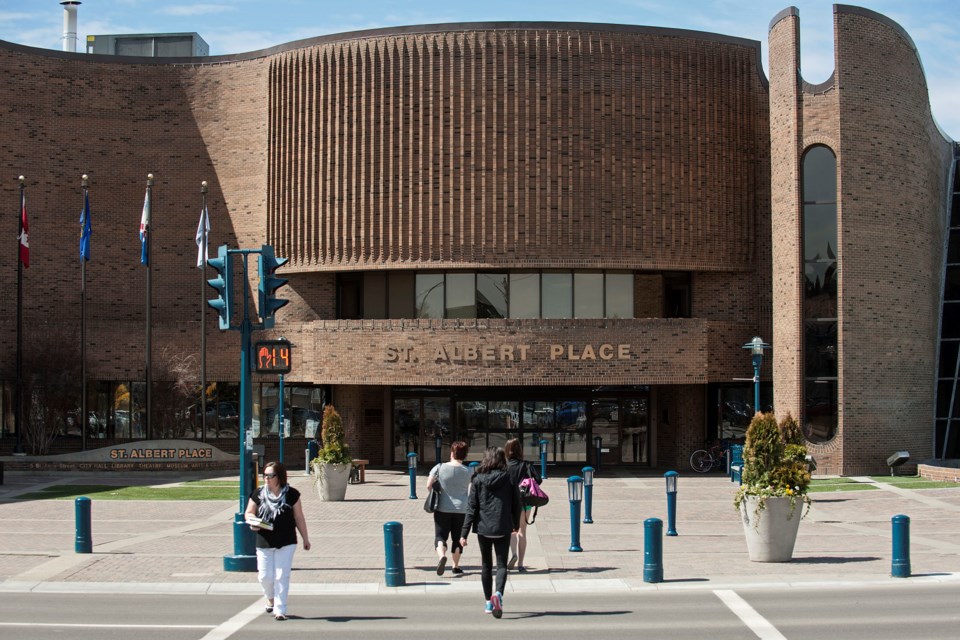A new study from the Fraser Institute concludes Alberta municipalities need to make more of an effort to cut back on spending, but City of St. Albert Mayor Cathy Heron said it offers an unfair comparison.
"It's completely unfair. Different municipal governments provide different services across Canada ... it's not an apples-to-apples comparison," said Heron in an interivew with the Gazette.
The report, 'Local Leviathans: The Rise of Municipal Governments', found Alberta cities spent more money per capita while growing their revenues more than any other province in 2018. The report also found Alberta cities spent around 35 per cent more while revenues grew by 30 per cent between 2008 and 2018.
"Municipalities often will say that they don't have enough money and require new revenue tools and new revenue sources. But if you look at the numbers, they've been doing quite well in terms of being able to increase their spending, and that spending is directly tied to their revenues," said Livio Di Matteo, professor of economics at Lakehead University and author of the study.
Over the last two decades, major cities saw an increasing tax base with rising housing prices and development. Cities in Alberta then increased spending when times were good, but when the economy took a turn, municipalities looked at increasing taxes or provincial assistance to balance out, he said.
"You're not going to turn your ship around overnight and start cutting and slashing, I'm not advocating for that," he said. "I'm saying that before they start raising tax rates by two, three or four per cent, maybe they should look at making sure spending doesn't grow to match it."
At the same time, the COVID-19 pandemic has had a devastating effect on Canadian municipalities. The shortfall for cities across the country is estimated as high as $20 billion, suggesting a 17-per-cent drop from 2018 revenues. Last estimates for the City of St. Albert projected a $14.4-million shortfall before the city whittled that down to $500,000.
"If you look at the shortfall for COVID-19 revenues, most of it affects user fees of one type or another, whether it's through transit or other types of services the city is providing. And that's probably a one-time kind of shock," Di Matteo said.
"So, how do you deal with that shock? You need a multi-pronged solution. Given tax revenues have been growing healthily for 20 years at the municipal level, raising taxes should be the last option. You should be looking at, where can you restrain spending growth? Where can you reorganize and reduce spending to deal with COVID-19?"
Blanket assessment 'unfair'
Per person, the City of St. Albert has stayed on the lower end of the spending scale, Heron said, pointing to a recent Canadian Taxpayers Federation report. That study found St. Albert spends $2,896 per person, ninth on the list of 14 Alberta cities with populations over 30,000 people. Medicine Hat topped the list at $6,243 per person.
"I think we do a pretty good job in spending compared to other municipalities," Heron said.
St. Albert's tax rate increases have been "well below" the rate of inflation over the last decade, she said. But there are a few reasons behind the rise in spending.
"I'm going to use the word that everyone hates – downloading from the province," she said. That's a reference to municipalities spending more on services that typically fall under the province's purview, like mental health, affordable housing, and childcare.
"If the province doesn't want to spend on mental health, they stop spending – but somebody has to. So it's unfortunate, but municipalities end up picking it up because we're closest to the people."
Local governments also own 60 per cent of all public infrastructure across the country, according to the Federation of Canadian Municipalities. Cities have to be proactive in funding expensive lifecycle projects to ensure those assets don't fall into a state of decay, Heron said.
While Di Matteo said he agrees there's been a shift in spending responsibilities, it's up to municipalities to push back.
"I mean, you can't just simply throw up your hands and say, 'The province made us do it.' Politically, you do have to push back on that," he said.
Given that both municipal wage rates and employment numbers are negative drivers of a city's operating surplus, the report argues, "it stands to reason that municipalities need to make more of an effort to address their spending."
In the city's 2020 budget, council voted to hold wages at zero per cent for all non-union employees, including city councillors. But at the same time, the city has to offer competitive rates to make sure it can retain quality department staff, Heron said.
"The ask for municipalities to cut back on spending is fair. But I think every level of government should be asked the same thing," she said, pointing to the Alberta government's forecasted deficit of $24 billion, the highest in the country.
But residents will soon have their say on where the city should focus its spending, Heron said.
The first phase of the city's fiscal and operational review is due at the end of October, which should identify some efficiencies. Then within the month, the city's chief administrative officer will be presenting the 2021 budget publicly with opportunities for public engagement.
"We are open to hearing where we should be spending money and where we shouldn't. Absolutely," she said.




